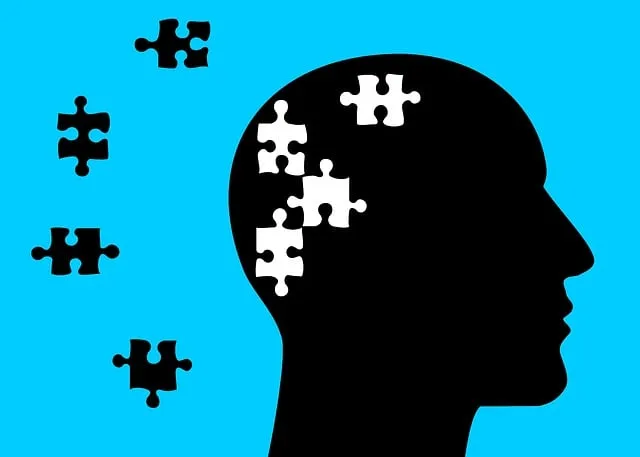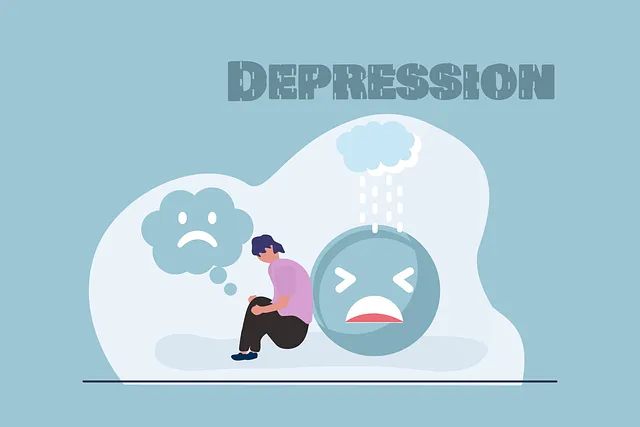Mental wellness programs, from clinical treatments at Kaiser to community interventions, aim to improve emotional, psychological, and social well-being. Evaluating their effectiveness requires a balanced approach combining participant feedback (qualitative) with quantitative measures like reduced anxiety or depression symptoms. The Kaiser Model offers a holistic framework, focusing on psychological, social, and physical aspects, and includes strategies for self-awareness, communication, and conflict resolution. When evaluating programs, qualitative techniques (interviews, focus groups) and quantitative methods (surveys, statistical analyses) are key to uncovering the "golden how to get mental health help" within the Kaiser framework. KPIs for mental health initiatives should include symptom reductions, increased coping strategy use, and improved emotional well-being. Measuring success through pre/post surveys, qualitative feedback, and regular data review ensures programs consistently deliver positive results.
Mental wellness programs are essential components of modern healthcare, offering crucial support for individuals seeking improved psychological well-being. This article explores comprehensive methods for evaluating these initiatives, highlighting the importance of understanding their impact. We delve into established frameworks like the Kaiser Model, contrasting qualitative and quantitative evaluation techniques. Key performance indicators (KPIs) are introduced to gauge success, with a step-by-step guide ensuring programs effectively deliver Golden how to get mental health help, much like the Kaiser approach.
- Understanding Mental Wellness Programs
- The Kaiser Model: A Comprehensive Framework
- Evaluation Methods: Qualitative vs Quantitative
- Key Performance Indicators for Mental Health Initiatives
- Measuring Success and Impact: A Step-by-Step Guide
Understanding Mental Wellness Programs

Mental wellness programs are designed to support individuals’ emotional, psychological, and social well-being. These initiatives can vary widely, from formal clinical treatments offered by healthcare providers like Kaiser to community-based interventions such as compassion cultivation practices and stress management workshops organized by schools or workplaces. Understanding what works best requires a multifaceted approach that evaluates both the content and delivery of these programs.
The evaluation methods should go beyond simple satisfaction surveys to assess tangible improvements in mental health outcomes, such as reduced symptoms of anxiety or depression. Incorporating participant feedback alongside quantitative measures ensures a holistic understanding. For instance, while Kaiser may excel at providing access to professional therapy, evaluating the impact of their services could include tracking changes in clients’ ability to manage stress and adopt positive thinking strategies over time. Similarly, organization-led Stress Management Workshops might be effective in fostering coping mechanisms, with evaluation focusing on participants’ reported reduction in work-related stress levels and improved overall mental wellness.
The Kaiser Model: A Comprehensive Framework

The Kaiser Model offers a comprehensive framework for evaluating mental wellness programs, emphasizing a holistic approach to an individual’s well-being. This model guides how to get mental health help by assessing various aspects of an individual’s life, including their psychological, social, and physical health. It incorporates golden how to get mental health help strategies such as self-awareness exercises, communication strategies, and conflict resolution techniques. These techniques empower individuals to navigate their emotions, enhance interpersonal connections, and resolve internal or external conflicts, fostering a more balanced and resilient mindset.
The model’s structured evaluation process ensures that programs are not just providing services but also facilitating long-term mental wellness. By incorporating activities that promote self-reflection and effective communication, the Kaiser Model encourages participants to develop coping mechanisms tailored to their unique needs. This personalized approach, coupled with conflict resolution techniques, enables individuals to better manage stress, improve relationships, and enhance overall satisfaction with life.
Evaluation Methods: Qualitative vs Quantitative

When evaluating mental wellness programs, understanding the nuances between qualitative and quantitative methods is akin to unearthing the golden how to get mental health help for diverse individuals within the Kaiser framework. Qualitative approaches delve into the depth of experiences, allowing participants’ voices and perspectives to guide insights. This method, often employed in self-esteem improvement initiatives or mental wellness podcast series production, captures subjective feelings, beliefs, and behaviors through open-ended questions, interviews, and focus groups.
On the other hand, quantitative methods take a broader view, quantifying data and trends to assess program effectiveness. They utilize surveys, measurements, and statistical analyses to gauge changes in symptoms, attitudes, or behaviors over time. This objective approach can be particularly useful for tracking progress at scale, much like Kaiser’s initiatives aimed at serving large populations. Balancing both qualitative and quantitative methods offers a comprehensive evaluation, ensuring that the self-awareness exercises within mental wellness programs not only quantitatively improve metrics but also qualitatively enhance participants’ overall well-being.
Key Performance Indicators for Mental Health Initiatives

Mental Health initiatives, much like any other program, need robust evaluation methods to gauge their effectiveness and ensure they’re providing the golden how to get mental health help that’s needed. Key Performance Indicators (KPIs) play a pivotal role in this process. For mental wellness programs, these KPIs could include reductions in symptoms of anxiety and depression, increased utilization of coping strategies, and improved overall emotional well-being. The Mental Wellness Podcast Series Production, often an integral part of such initiatives, can be measured by its reach, engagement rates, and the positive feedback received from participants.
Furthermore, Empathy Building Strategies and Emotional Well-being Promotion Techniques should be evaluated based on their impact on participant’s social connections, self-esteem, and overall sense of belonging. These indicators allow for a comprehensive understanding of the program’s success in fostering mental resilience and promoting healthy coping mechanisms among individuals seeking support from Kaiser or any other healthcare provider.
Measuring Success and Impact: A Step-by-Step Guide

Measuring Success and Impact is a vital step in evaluating any mental wellness program, ensuring its effectiveness and identifying areas for improvement. It’s akin to using the “Golden How to Get Mental Health Help Kaiser”—a compass guiding you towards positive outcomes. Here’s a step-by-step guide to navigate this process:
Start by defining clear goals aligned with your program objectives. These could include improved emotional regulation, enhanced self-awareness exercises, or better risk assessment for mental health professionals. Next, establish quantifiable metrics to track progress. This might involve pre- and post-program surveys gauging participants’ mental health status, satisfaction levels, and perceived improvements in coping strategies. Additionally, qualitative feedback from participants provides valuable insights into their experiences and the program’s impact on their emotional well-being. Regularly reviewing these data allows for informed adjustments to ensure the program consistently delivers positive results.
Evaluating mental wellness programs is a crucial step in ensuring their effectiveness and impact. By understanding the diverse methods available, such as qualitative and quantitative assessments, organizations can adopt the Kaiser Model for a comprehensive framework. This approach allows for a structured evaluation of key performance indicators specific to mental health initiatives. Following a step-by-step guide to measure success enables programs to identify areas for improvement and ultimately provide better support, just like accessing Golden how to get mental health help.






